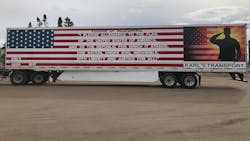We are starting to see some real-world testing of electric trucks. Companies have invested a great deal of energy and resources to get these low volume prototypes of production intent designs out on the road.
Volvo Trucks North America just recently deployed its first pilot VNR electric truck to deliver local parts between its TEC Equipment dealerships in Fontana and La Mirada, Calif. Earlier this year Freightliner delivered 30 electric trucks to NFI and Penske hauling containers and other freight. There are other examples as well.
A prototype is just one step in the process of bringing a vehicle from concept to full scale production. Orchestrating the launch of a new truck model is a complex activity involving a number of parallel and interrelated activities and milestones, gradually growing in maturity over the course of the program.
Think of it this way: I can make two marvelous hamburgers in the grill in my backyard. Maybe I can even make a dozen of them for a family barbecue. But moving from there to opening a burger joint is a whole other thing. And I am pretty sure I would fail at that because of issues with quality control and consistency.
Moving a truck from initial development to mass production is the same. Only it is much, much harder.
As we discussed in our report Defining Production, a new vehicle concept will go through a number of iterations as it matures from an idea to a commercially available unit.
We are in the physical testing phase of production with some electric vehicles with OEM test drives on real roads with weighted trailers in a range of weather and seasonal conditions. That is followed by, or sometimes done in parallel, with selected fleets conducting operational tests from their own facilities with real commercial loads.
There will be changes — some of them significant — from these initial prototypes to pre-production and then limited early production units. The objective of these on-road prototypes is to highlight and resolve any performance or durability issues that were somehow missed in development and to gain miles to improve OEM and fleet confidence in the new product.
Building confidence in these new products is key. Fleets have high expectations surrounding cost of operation, performance, reliability and durability, etc. for any new truck whether built by a manufacturer they are familiar with or one that is new to the trucking market.
Prototypes and on-road testing allows the truck maker to make additional changes to vehicle design and performance. Truck makers need to make sure not to bring a vehicle to the market before it is ready, no matter what the market pressures are.
Think of these prototypes as a way for manufacturers to test their vehicles, work out the bugs and make improvements. This is sort of like me moving from making burgers for my family, to making burgers for the neighborhood block party to making burgers at the town’s annual July 4th celebration with the ultimate goal of someday opening my own burger joint. It’s a process and whether we are talking about mass production of burgers or trucks going through the process is important.
Michael Roeth has worked in the commercial vehicle industry for nearly 30 years, most recently as executive director of the North American Council for Freight Efficiency. He currently serves on the second National Academy of Sciences Committee on Technologies and Approaches for Reducing the Fuel Consumption of Medium and Heavy-Duty Vehicles and has held various positions in engineering, quality, sales and plant management with Navistar and Behr/Cummins.
About the Author

Michael Roeth
Executive Director
Michael Roeth is the executive director of the North American Council for Freight Efficiency. He serves on the second National Academy of Sciences Committee on Technologies and Approaches for Reducing the Fuel Consumption of Medium and Heavy-Duty Vehicles and has held various positions with Navistar and Behr/Cummins.
